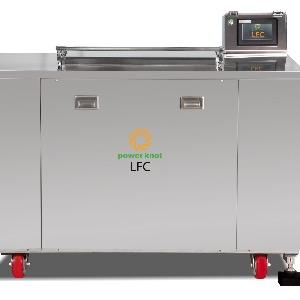
Reduce 5000 Tonnes of CO2e with Food Waste Diversion by Green Economy North
Please find below the
Finalist Evaluation
Judges'' comments
There are other products in the market similar to it. The only area where this proposal was lacking is the technical clarity. The applicant indicated that the only output would be wastewater effluent that complies with sewers-by-law. There is only one unclear mentioning of solids output at the end of the proposal. So it is unclear if there is any solid output and the quality and method of disposal of such output. For the effluent to be of a quality to comply with any sewers-by-law there should be solid output (based on mass balance) or too much dilution (waste of clean water and increasing the wastewater volume at the WWTP, negative impacts). Checking company web site under Q& A, they claim the following: -"What comes out of the LFC could be used to irrigate the land. It is rich in nutrients". So if the wastewater is rich in nutrients it can't be complying with sewer-by-law. They continues to clarify that "However, if the waste food has meats, fats, grease, and spices such as salt and peppers, the output may not be suitable. You should test the output to see if you can use it. In any case, you need to filter the output before you can use it. " This again indicates that the wastewater effluent from the LFC is not suitable to be disposed of in the sewer without further treatment such as filtering, which indicates that there is solid waste generated and can't be disposed of with the wastewater effluent.
The cost/benefit to a small business is a big question mark. Didn't see strong case for why SME would spend money on this. The GHG impact is questionable. Once the food waste is sent to sewer, it goes to treatment plant which then removes organics and land spreads or other. ie. GHGs get emitted from sewage treatment process instead of landfill. WOuld sewer use bylaws even permit this?
I agree with the comments given by Sandra Ohdendahl and Mona El Hallak around needing to be careful of effluent. Additionally, a potential key limitation to this is that water input is fairly high. It might be worthwhile to assess if using this technology reduces water use in other ways. If the limitations are addressed, the biodigester offers many benefits to restaurants to reduce greenhouse gas emissions. Given that the application of this technology is ubiquitous, I wonder if there are other options for value add to keeping foodwaste away from landfill. However, this technology appears to address a widespread problem in a convenient solution which is highly valuable.
The restaurant industry is often overlooked in thinking about sustainability and GHGs. Food waste in restaurants presents a large option for carbon reductions and I do like the potential simplicity of this solution for the industry. That being said, the regulatory and market hurdles for this project may be substantial, and even though the applicant has given this quite a lot of thought some more research could be necessary.
No comments have been posted.